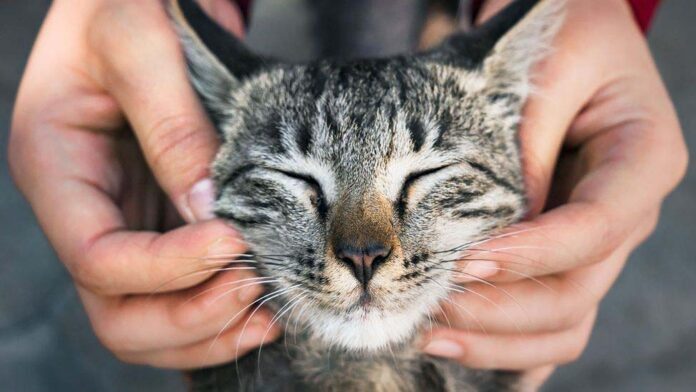by Janice Atkey Videto
How would you have like it if all your neighbours had their dogs defecate on your lawn where your small kids play? No? But house cats, allowed to wander, use the neighbours’ gardens for a litter box, so when your neighbours kneel to weed, guess what they land in? Their pets are not in your yard, why is your pet in theirs? The idea that cats need to wander to enjoy their life is outdated and false. They injure, and suffer injury, at an astonishing rate.
Many of our beloved song bird populations are on the endangered list. The decimation that outdoor house cats wreak on these populations is significant. Contrary to popular belief, cats are not wild. They are not part of the natural order of prey and predator. They are a domesticated species. Their impact on the natural world is real, and is tipping the scales for many species. If your cat kills a chipmunk or bird in Spring or Summer, she likely had 2-4 babies in her den or nest who will now suffer and die a slow death of starvation and hypothermia – a horrid way to die.
House cats put outside are subject to death and injury by cars, dogs, coyotes, fishers, household poisons, automotive chemicals and, worst of all, cruelty from humans. There have been many cases of outdoor cats found lynched, or beaten to death: rarely is that put on the news.
Another threat to unattended pets are people called “Rounders”, who make a living rounding up all the “strays”, or just flat-out stealing them from unlocked cars, or outside restaurants. The pets are then sold to labs for experimentation, or used to train fighting dogs; both fates are a gruesome end to an animal for whom we were supposed to have been responsible. It is big business and is commonplace. Some owners may think, “Oh well, Fluffy just wandered off, I guess”, and go out and get another one. This error keeps the “Rounders” in business.
In our hot, humid summers, outdoor cats suffer heat exhaustion and dehydration that can lead to brain damage and death. Our winters are severe, and delicate ears and toes can easily become frostbitten, and the cat can suffer hypothermia. Cats are not wild animals, and do not grow thick winters coats to protect them in our harsh climate. Barn cats are the exception, in that these working cats help farmers control rodent populations and, in return for their dedicated lifelong service, are provided with heated sheltered places in which to sleep, supplemental food, and appropriate veterinary care (such as spaying or neutering). Unlike house cats put outside all day, barn cats rarely stray from their own farm, as they are provided with all they need right there.
And speaking of spaying and neutering, with a whopping 6 million adoptable animals being euthanized in shelters every year in Canada and the U.S., no one should be producing more kittens or puppies. In order to really experience what your cat experiences being outside all day (or all night) in the snow, picture yourself in a Spring coat, pants, and socks (no shoes, or boots) spending the day outside, trying to find shelter or food, and imagine how well you would fare. Not too well, I dare say: penetrating cold, wet and frozen feet, hunger, and loneliness. Outdoor cats that I have observed spend most of the day crying and crying to be let inside, holding their freezing pink toes in the air in a vain attempt to avoid painful frostbite.
Animal shelters, vets, animal rescue groups, animal control officers, all advocate keeping cats indoors and all pets confined to their yards. Why? Because these people see first-hand the horrific results of straying pets. A rambunctious young cat can be a bundle of energy in a household, but also a joy. Putting them outside will not teach them “manners”. Gentle correction with a firm “no”, or “off”, will quickly teach kitty what areas he is allowed on, and which he is not. Pick the cat up from the kitchen counter, for example, with a firm “off”, and place him where he can be. Then praise him like crazy. Cats are highly motivated by positive reinforcement, not scoldings. Distract incorrect behaviour with a toy and a moment of play, then praise them up when their attention is redirected. It takes consistency, repetition, and patience, but you will be rewarded with a well-behaved snuggly cat with whom you have a deep and bonded relationship. You will learn and appreciate their own unique personality.
Remember, a dog views us as pack leader, but a cat views us as surrogate mother. As such, it is our responsibility to demonstrate the consistency, repetition, and patience that is part of cat parenting. If you are unable to invest the time in a young cat, do consider adopting an older cat from a shelter who is more likely to look for nice places to nap, like your lap, or snuggled up against you, rather than trying to summit your curtain rods like a mountain climber!
In pleasant weather, take your cat outside in a dog crate with a floor, so they can get all the sniffs while you sit and have a coffee. Or put a body harness on, so he can wander your gardens with you when you are outside. Don’t leave him unattended in either. That only takes a bit more effort than just opening a door, and will bond your cat with you.
A happy indoor cat is provided with snuggles, love, healthy socializing, gentle training, toys, cozy private places to sleep, and is considered a full and valued member of the family. Their human will discover what complex and interesting companions cats are. Please consider this next time you open your door and send your beloved pets out into the harsh world for hours or days at a time.

